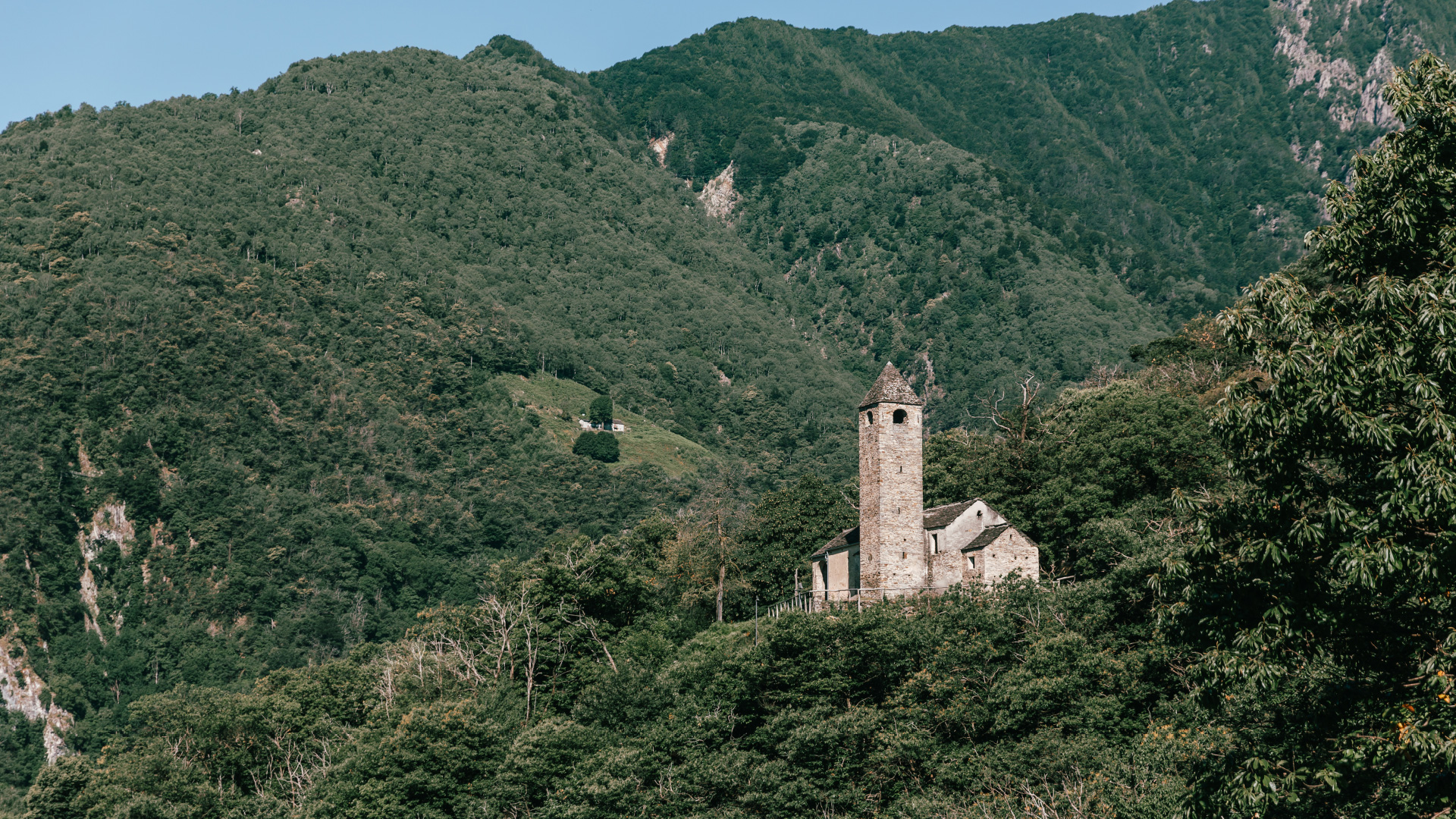Church of San Barnárd
Located at an altitude of 600 m a.s.l., the Church of San Barnárd is one of only a few monuments of national importance (Category A) found in the Bellinzona area.
As it lies far away from the road network and is only accessible by the cable car (or on foot along trails that are sometimes challenging) this important monument was rather unknown and scarcely visited, even by the local residents.
This striking church (whose valuable frescos are discreetly preserved after the restoration work in recent years) was surrounded by a few scattered groups of houses where the inhabitants of Monte Carasso resided permanently until the 1700s.
The Church of San Barnárd (San Bernardo) is open from Wednesdays to Sundays from 10.00 – 17.00.
History
The Church was built during the 11th and 12th centuries, despite the lack of written documents from this time. Over the centuries there have been two major interventions.
The first was during the 15th century, with the Church doubling in size and a portico and a bell tower added. During the second intervention carried out the following century the chapel was added, the apse was transformed and the sacristy was built. As for the frescos, the oldest ones appear to be those of Madonna del Latte and Saint Christopher, dating to the middle of the 14th century.
The frescoes on the northern wall date to 1427: the Allegory of the Months, the Adoration of the Magi, the Crucifixion and the Group of Saints. After the expansion during the second half of the 15th century, the new walls were frescoed by Cristoforo and Nicolao of Seregno. The frescoes in the new chapel and the new apse date to the end of the 16th and the beginning of the 17th century. In the last decades of the 18th century the site began to decline.
While it is true that the Church was built between the 11th and the 12th centuries, its dedication must have occurred at the end of the 12th as Bernard of Clairvaux died in 1153 and was canonized in 1174.
At that time, it was a small Romanesque oratory that took up half of the Church’s present length; it extended to where the Allegory of the Months begins and consisted of a nave and a semicircular apse (with a choir and an altar) surrounded by a wooden fence.
In 1450 the Church of San Barnárd was enlarged: its area was doubled, the portico was added, and the bell tower built. Then the work of the two men from Seregno began. Cristoforo and his nephew Nicolao were two artists from the village of Seregno in Brianza, Lombardy, who moved to Lugano. They were active in Ticino, especially north of Monte Ceneri, during the second half of the 15th century. The Last Supper is by the uncle, Cristoforo.
During the second half of the 16th century, the Church of San Barnárd took on its current appearance with the addition of the Chapel of Saint Nicholas, the transformation and enlargement of the apse and the construction of the sacristy.
Opening hours with guide present
(closed in case of bad weather)
January/February/December (Sat-Sun) 11.00 – 14.00
March/November (Thu-Sun) 11.00 – 15.00
April/May/June (Wed-Sun) 10.30 – 16.30
July/August/September/October (Wed-Sun) 10.00 – 17.00



